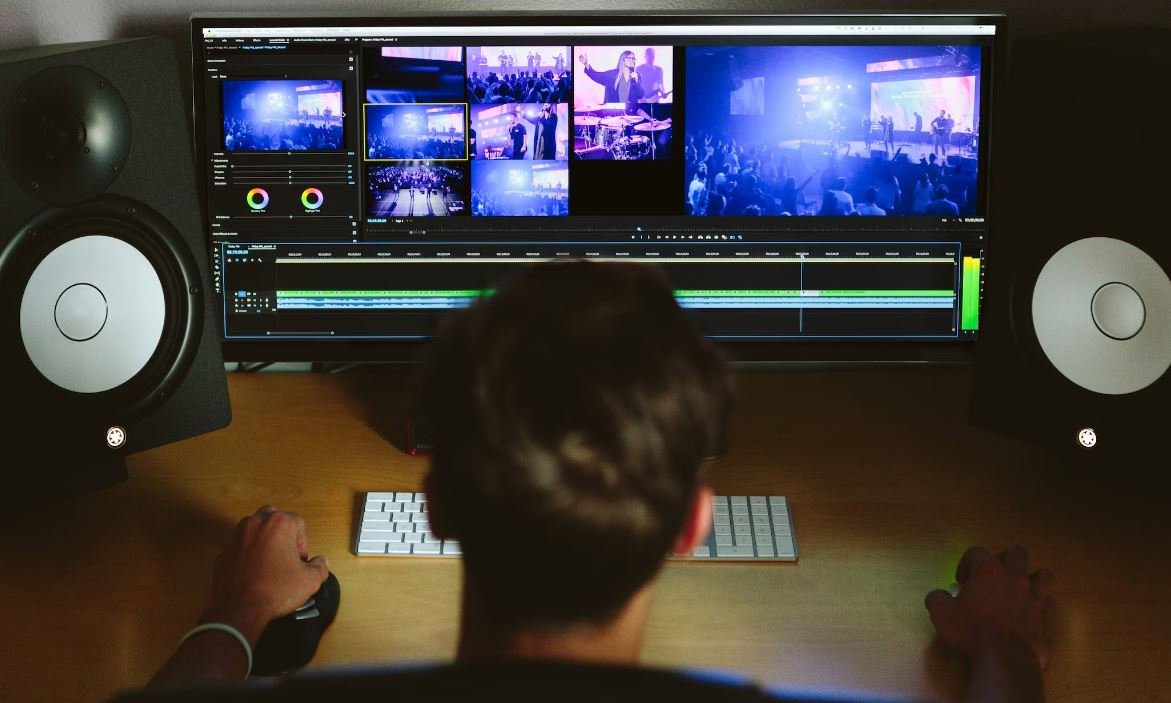Is Deepfake Legal?
Deepfake technology, a method of using artificial intelligence to create realistic fake videos or images, has become increasingly sophisticated in recent years. While the technology has many potential applications, from entertainment to political satire, it also raises ethical and legal concerns. This article explores the legality of deepfakes and examines the potential consequences they may have on society.
Key Takeaways:
- Deepfake technology uses AI to create realistic fake videos or images.
- The legality of deepfakes varies across jurisdictions.
- Deepfakes can have implications for privacy, copyright, and defamation laws.
- Regulations are being developed to address the challenges posed by deepfakes.
**Deepfakes** have the potential to impact various aspects of society, including politics, entertainment, and personal relationships. It is important to understand the legal implications of deepfake technology to determine its ethical use and ensure appropriate safeguards.
**Privacy concerns** arise when deepfake technology is used to manipulate someone’s image or create explicit content without their consent. Individuals may have their likeness falsely attributed to explicit or harmful content, leading to reputational damage and emotional distress. Laws surrounding privacy and consent may provide some remedies to victims of deepfake abuse.
**Copyright infringement** is another issue that deepfakes raise. Deepfake creators often use copyrighted material without permission, such as movies, TV shows, or images of public figures. This unauthorized use of copyrighted material can result in legal actions and financial penalties for the creators.
**Defamation** is a potential legal ramification of deepfakes when they are used to create false and damaging statements about an individual. Deepfakes can be employed to spread misinformation or target public figures with harmful intent. Victims of deepfake defamation may pursue legal action against the creators for reputational harm.
The Legality of Deepfakes
The legality of deepfakes is a complex and evolving topic that varies across jurisdictions. While some countries have already implemented legislation specifically targeting deepfakes, others rely on existing laws to address the potential harms associated with these technologies. The table below provides an overview of some key regulations related to deepfakes in different countries:
| Country | Regulation |
|---|---|
| United States | No specific federal law on deepfakes, but existing legislation can be applied (e.g., copyright, privacy, defamation laws). |
| China | Deepfake regulations introduced in 2019 to combat malicious use, but concerns remain about enforcement. |
| Germany | Law against covertly generated images can be applied to deepfakes. |
*While these regulations exist, the effectiveness of enforcement and the ability to keep up with rapidly advancing technology are ongoing challenges.*
The potential for misinformation and harm has prompted the introduction of legislation in various countries to regulate deepfakes. As the technology continues to develop, legal frameworks are being iteratively revised to address the complex issues surrounding deepfake creation and dissemination.
The Future of Deepfake Regulation
Governments, tech companies, and organizations are actively working to establish comprehensive regulations to address the challenges posed by deepfake technology. These efforts aim to strike a balance between preserving freedom of expression and protecting individuals from harmful deepfake abuses.
**Tech companies** are investing in detection tools powered by AI to identify and flag deepfake content. These tools can help platforms prevent the spread of misleading or harmful deepfakes, reducing the potential impact they have on individuals and society at large.
Conclusion
The legality of deepfakes remains a complex and evolving issue. While some countries have taken steps to address the potential harms associated with the technology, much work still needs to be done to establish comprehensive regulations. As deepfake technology continues to advance, the legal landscape surrounding deepfakes will likely undergo further changes and refinements to protect individuals and society as a whole.

Common Misconceptions
Is Deepfake Legal?
There are numerous misconceptions surrounding the legality of deepfake technology. While it is important to understand the potential ethical implications, it is crucial to differentiate between the creation and dissemination of deepfakes in order to assess their legality accurately.
- Deepfakes are always illegal.
- Deepfakes are protected under the First Amendment.
- Only celebrities are targeted by deepfakes.
Contrary to popular belief, it is essential to recognize that not all deepfakes are inherently illegal. The act of creating a deepfake does not automatically make it unlawful. However, its usage can lead to legal consequences depending on the intentions and actions involved, such as non-consensual pornographic content or attempts to deceive individuals.
- Creating deepfakes for entertainment or parody purposes is legal.
- Deepfakes used for malicious activities, such as harassment or blackmail, are illegal.
- The legality of deepfakes can vary across jurisdictions.
A significant misunderstanding revolves around the notion that deepfakes are protected under the First Amendment, which guarantees freedom of speech. While free speech is safeguarded, it does not imply a blanket protection for deepfakes. The legality is determined by factors like the presence of consent, intent, and harm caused.
- Deepfakes can infringe upon an individual’s right to privacy.
- Deepfakes can deceive and manipulate public opinion.
- Legislation is being developed to address the legal challenges surrounding deepfakes.
Another common misconception is that only celebrities or public figures are targeted by deepfakes. In reality, anyone can become a victim of deepfake technology, amplifying the need for legal safeguards and education to protect individuals from potential harm.
Recognizing the legal and ethical complexities surrounding deepfake technology is crucial in order to navigate this rapidly evolving field. By dispelling common misconceptions, individuals can better understand the nuanced legal discussions occurring, paving the way for informed legislation and responsible use of deepfakes in the future.

Introduction
In recent years, deepfake technology has gained widespread attention and raised numerous ethical and legal concerns. Deepfakes refer to fabricated videos or images that appear remarkably real, featuring manipulated faces or voices. As the technology continues to advance, questions regarding its legality have emerged. This article explores various aspects of deepfake legality, examining different jurisdictions and their approaches to this complex issue. The following tables present significant findings and statistics related to deepfake regulations and cases worldwide.
Table: Countries with Deepfake Legislation
This table presents a selection of countries that have implemented legislation specifically targeting deepfake creation and dissemination. The laws differ in their scope and penalties.
| Country | Year of Legislation | Scope | Penalties |
|---|---|---|---|
| United States | 2020 | Bans malicious deepfakes for political manipulation. | Fines up to $150,000 and imprisonment. |
| China | 2019 | Prohibits deepfakes used to spread false information. | Fines and potential criminal liability. |
| Germany | 2021 | Legislation being discussed to address deepfake threats. | Undetermined at this time. |
| India | 2020 | Regulates deepfakes in elections and explicit content. | Fines and potential imprisonment. |
Table: Notable Deepfake Cases
This table highlights significant deepfake cases that have had legal implications and garnered public attention globally.
| Case | Country | Key Details |
|---|---|---|
| Hynes vs. The State | United States | First person criminally charged with nonconsensual pornography deepfake. |
| Zao Deepfake App | China | An app causing concerns about privacy and data protection. |
| Obama Impersonation Video | Belgium | A deepfake video made headlines during a political satire show. |
Table: Deepfake Penetration by Industry
This table provides an overview of the extent to which different industries are vulnerable to deepfake threats.
| Industry | Vulnerability Level | Examples |
|---|---|---|
| Politics | High | Politicians targeted for false statements or scandals. |
| Entertainment | Moderate | Deepfakes used for celebrity impersonations or fabricated gossip. |
| Journalism | Low | Minor instances of deepfake usage in news broadcasts. |
| Finance | Minimal | Currently not a significant target for deepfake manipulation. |
Table: Social Media Platforms’ Deepfake Policies
This table outlines the deepfake policies adopted by major social media platforms to address the proliferation of synthetic media.
| Social Media Platform | Policy |
|---|---|
| Bans deepfakes that are likely to deceive or harm. | |
| Labels and warns users before sharing synthetic or manipulated media. | |
| YouTube | Prohibits deepfakes spreading misinformation or violating community guidelines. |
| TikTok | Removes deepfakes violating content policy or misusing others’ likeness. |
Table: Deepfake Detection Methods
This table showcases different techniques and technologies used for identifying and combating deepfake content.
| Method | Description |
|---|---|
| Forensic Analysis | Examines inconsistencies in pixels, lighting, or facial expressions. |
| Machine Learning | Uses algorithms to analyze patterns and differentiate real from fake. |
| Blockchain Verification | Utilizes distributed ledgers to verify the origin of media. |
Table: Impacts of Deepfake Technology
This table highlights the wide-ranging impacts of deepfake technology on various sectors and individuals.
| Impact | Description |
|---|---|
| Political Disinformation | Deepfakes threaten democratic processes by spreading false information. |
| Identity Theft | Personal data can be exploited by creating convincing fake identities. |
| Reputation Damage | Deepfakes can ruin a person’s reputation by fabricating damaging content. |
| Erosion of Trust | Public trust in visual media and information is diminished. |
Table: Deepfake Sentiment Analysis
This table showcases sentiment analysis results of public opinions regarding deepfake technology.
| Positive | Neutral | Negative |
|---|---|---|
| 39% | 45% | 16% |
Table: Future Deepfake Trends
This table presents anticipated trends and advancements in deepfake technology.
| Trend | Description |
|---|---|
| Audio Deepfakes | Increasingly realistic audio manipulation for voice impersonation. |
| Biometric Forgery | Deepfakes targeting facial recognition systems to bypass security measures. |
| Real-Time Deepfakes | Immediate, high-quality deepfake generation during live streaming. |
Conclusion
As deepfake technology continues to evolve, the legal landscape surrounding its usage remains complex and varied across different jurisdictions. While some countries have implemented specific legislation addressing deepfakes, others are still developing frameworks to regulate this emerging technology. Notable cases have highlighted the potential harm caused by deepfakes, including political manipulation and violations of privacy. Major social media platforms have also implemented policies to combat deepfake proliferation. Going forward, advancements in deepfake creation and detection techniques pose new challenges and call for continued research and scrutiny to strike a balance between promoting innovation and safeguarding against misuse.
Frequently Asked Questions
What is a deepfake?
A deepfake is a manipulated video or audio that has been created using artificial intelligence techniques to replace the face or voice of an individual with another person’s likeness.
Is creating deepfakes legal?
The legality of creating deepfakes varies depending on the jurisdiction. Some countries have specific laws that address deepfakes, while others rely on existing laws such as defamation, privacy, or copyright laws to regulate their creation.
When does a deepfake become illegal?
A deepfake becomes illegal when it violates someone’s rights, such as their right to privacy or their right to control their own likeness. This can occur if the deepfake is used for malicious purposes, harassment, defamation, or for creating non-consensual explicit content.
What are the potential consequences of creating and distributing deepfakes?
The consequences of creating and distributing deepfakes can vary depending on the jurisdiction and the intent behind their creation. In some cases, it may lead to civil lawsuits, criminal charges, or reputational damage. Additionally, sharing deepfakes can contribute to the spread of misinformation and undermine trust in media.
Can a deepfake be used for entertainment purposes without permission?
Using a deepfake for entertainment purposes without permission can potentially infringe on an individual’s right to control their own likeness. It is advisable to seek permission or use content that is in the public domain or has appropriate licenses for non-commercial purposes.
Are there any laws specifically targeting deepfakes?
Some countries have started introducing specific legislation to address the issues surrounding deepfakes. For example, certain jurisdictions have enacted laws to penalize the creation and distribution of deepfakes without consent, especially when used for malicious purposes.
What measures are being taken to combat the use of deepfakes?
Various organizations, governments, and technology companies are taking multiple steps to combat the use of deepfakes. These measures include developing detection tools, promoting media literacy, strengthening legal frameworks, and increasing public awareness about the potential dangers and impacts of deepfakes.
Can deepfake technology be used for legitimate purposes?
Yes, deepfake technology can be used for legitimate purposes such as computer graphics, film industry, virtual reality, and other areas that require realistic visual effects. However, it is essential to ensure that its usage adheres to legal and ethical guidelines.
What steps can individuals take to protect themselves from deepfake manipulation?
To protect oneself from potential deepfake manipulation, individuals can be cautious about what personal information they share online, use strong privacy settings on social media platforms, verify the authenticity of media before sharing, and stay informed about the latest deepfake detection techniques.
How can deepfake detection be improved?
Deepfake detection methods are continuously evolving as the technology progresses. Researchers are exploring various techniques such as forensic analysis, machine learning algorithms, and collaborations between tech companies and media organizations to improve the detection and identification of deepfakes.




